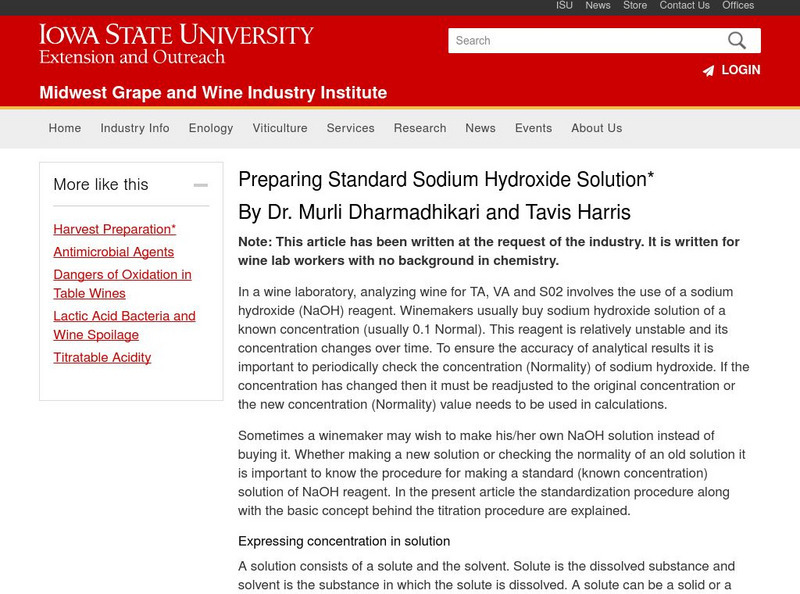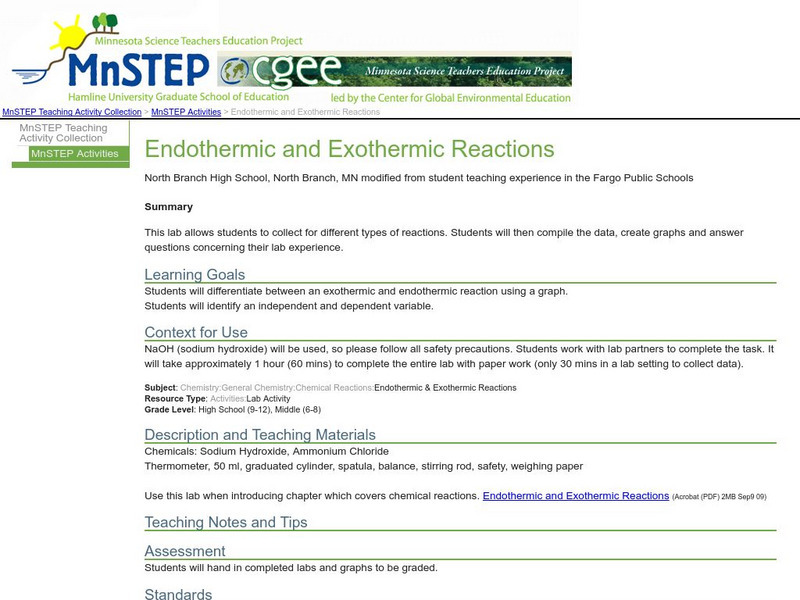Curated OER
Fatty Acids For Soap Making
High schoolers titrate a sample of fatty acids with standardized sodium hydroxide solution. From the amount of base needed for neutralization and the mass of sample used for titration, the apparent average molar mass of the sample is...
Curated OER
Acids, Bases, and Buffers
In this acids and bases worksheet, students test the pH of different solutions to determine if it is basic or acidic. Students complete 7 short answer questions based on their results.
Curated OER
Infectious Disease Detectives
Learners participate in a simulation of how diseases are transmitted. Each student holds a test tube, with only one containing the "disease" while the others have water. They move around the room until told to stop. Using droppers to...
Science is Fun
University of Wisconsin: Chemical of the Week: Chlorine and Sodium Hydroxide
Science is Fun website on chlorine and sodium hydroxide. Shows reactions between the two, as well as general background on each.
CK-12 Foundation
Ck 12: Physical Science: Properties of Bases
[Free Registration/Login may be required to access all resource tools.] What a base is and its properties and uses. How to detect and measure the strength of bases.
Iowa State University
Iowa State University: Standardizing Sodium Hydroxide
This laboratory exercise describes the proper method to determine the exact molar concentration of sodium hydroxide.
Other
Ccohs: Basic Information About Sodium Hydroxide
Provides information about purity, symptoms, composition, and immediate health risks involved with sodium hydroxide. In a question and answer format.
Science Education Resource Center at Carleton College
Serc: Endothermic and Exothermic Reactions
This lab allows students to collect data for different types of reactions: endothermic and exothermic. Students compile the data, create graphs and answer questions concerning their lab experience.
Science Struck
Science Struck: Potassium Hydroxide and Sodium Hydroxide
Learn what the difference is between potassium hydroxide and sodium hydroxide and what they are each used for.








